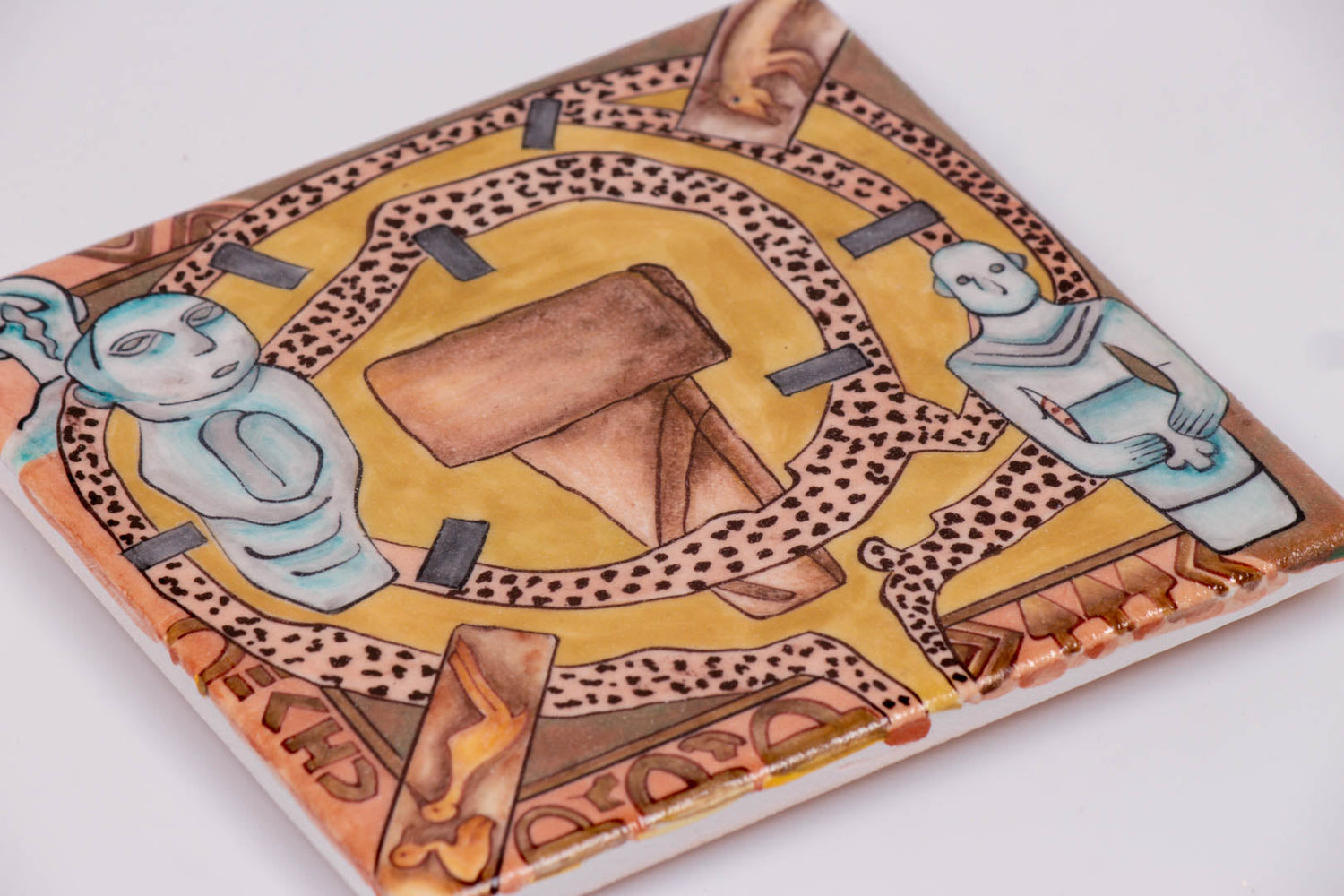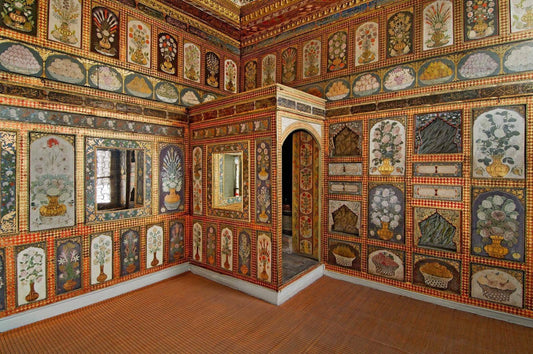Iznik tiles are a living work of art that transcends time and space. Shaped by the influences of many different cultures throughout history, this art form is admired and appreciated worldwide today. With its unique texture, exquisite detail, and vibrant colors, Iznik tiles bear the marks of both an aesthetic and cultural heritage. A unique handicraft, Iznik tiles have left their mark on an era with their originality and artistic value.
The Beginning of Tile Art
Tile-making is a well-known Eastern art form dating back to the time of the Assyrians. In ancient times, tiles were used as architectural decorative elements in Egyptian, Mesopotamian, Iranian, and Cretan cultures. The Turks' first encounter with tile-making occurred in Central Asia. Kiln remains and tile fragments found in excavations in the cities of Kashan (Iran) and Turfan (Turkestan) demonstrate that the Turks were no strangers to this art. Interestingly, due to the city of Kashan, tiles used in architecture until the 18th century were called "Kaşi," while various objects (such as plates, vases, and bowls) were called "Evani." However, as the popularity of porcelain imported from China grew, the Turkish "Kaşi" began to be called "Çini" to emphasize their high quality.
Tile Art Reaches Anatolia
After the Battle of Manzikert in 1071, Anatolia became a new homeland for both the Seljuks and their tiles. Tile art flourished in these lands during the 13th century, when Seljuk architecture reached its peak. Seljuk artists successfully employed tiles and mosaics in a variety of colors and geometric patterns, and were particularly successful in depicting animals.
Iznik Tiles and the Ottomans
In the 14th century, Anatolian tile art gained a new dimension with the Ottomans. Between the 15th and 17th centuries, İznik became a significant center of tile and ceramic production. During this period, İznik tiles, with their richness of color and pattern, adorned the walls of palaces in Istanbul. However, by the early 17th century, İznik tile art and technique had stagnated. Patterns and colors began to deteriorate, and the coral red color seen in tulip and carnation motifs in the 16th century disappeared. This decline is related to the stagnation of the Ottoman Empire.
Iznik Tile in the Contemporary Period
After a period of stagnation in the 18th century, Iznik tilemaking ceased completely in 1716. However, 300 years later, this unique art form has been revived by contemporary masters such as Faik Kırımlı, known by his pen name "Ameli Faik," Turgut Tuna, who teaches at Uludağ University's Iznik Vocational School, and Rasih Kocaman, who trained as a potter in Avanos, Central Anatolia. With his "heart hidden in tiles," Rasih Kocaman learned Iznik ceramics firsthand, settled in Iznik, and added his own touch to this rare art form. These masters revived Iznik tilemaking and dedicated themselves to it.
Iznik Tiles: New Period and Modern Works
With this revival, Iznik tiles have become an indispensable choice for both those seeking high-quality gifts and luxury collectors. Interior decor and design enthusiasts adorn their homes and offices with these unique pieces, drawing on their unparalleled beauty and unique artistic qualities steeped in history.
In this sense, the products offered by our Iznik Blue Tile brand embody all these values. More than just home or office decoration, Iznik tiles bring a slice of history and art into your living spaces.
Click to learn more about this unique art and own the most original Iznik tile designs. Own this unique piece of history and art!




